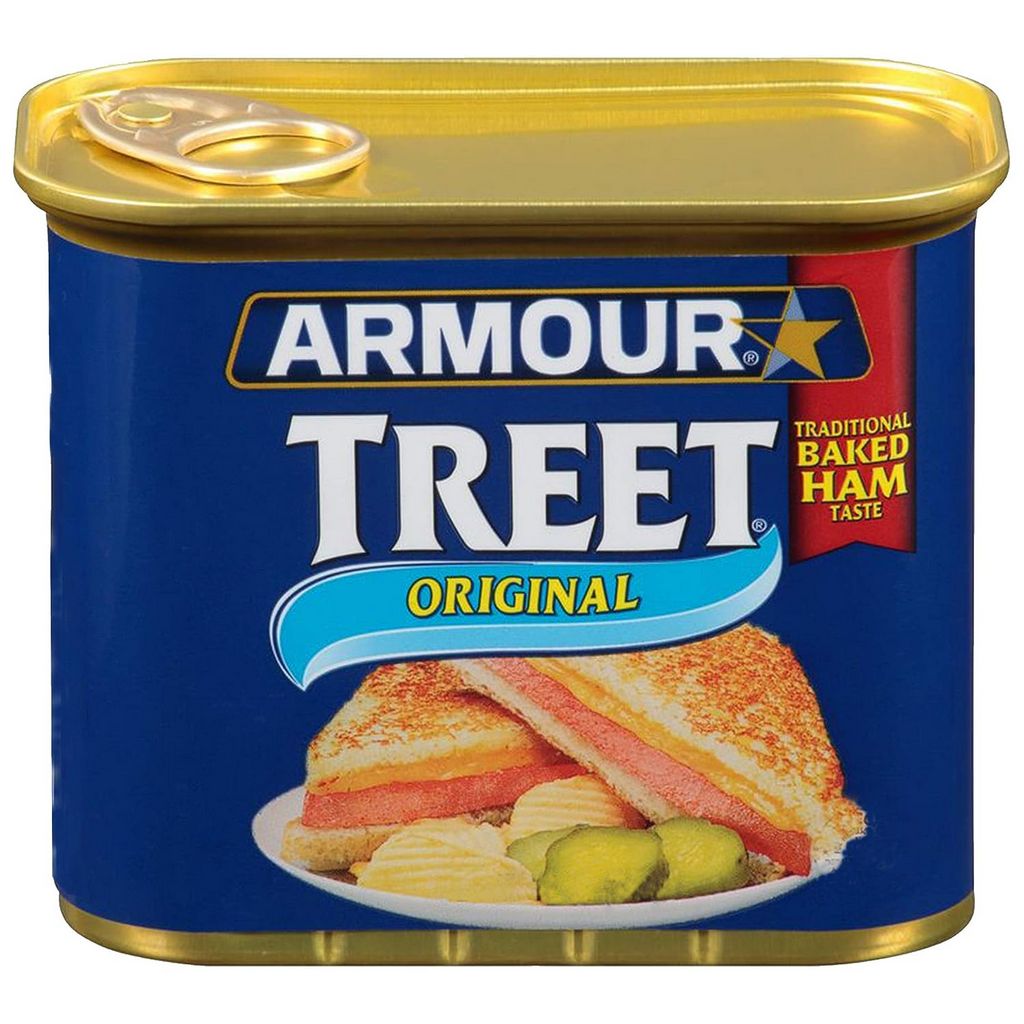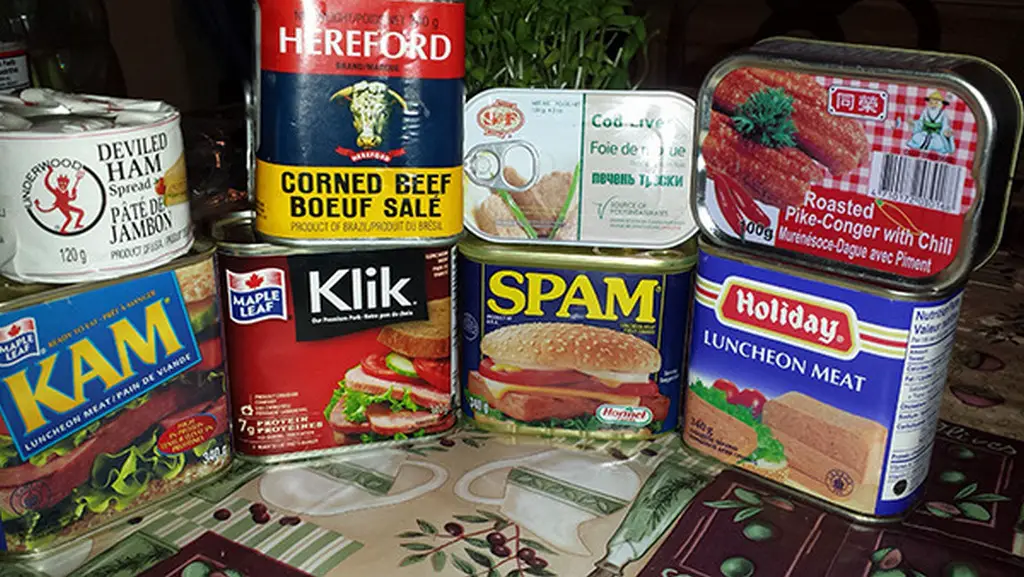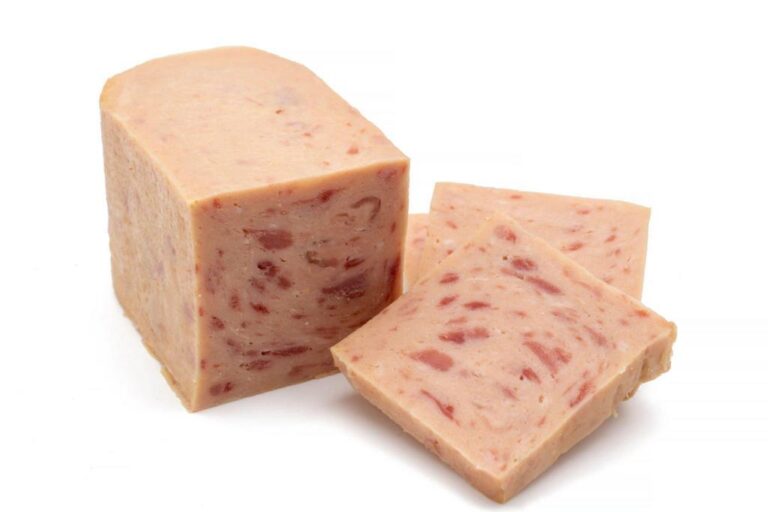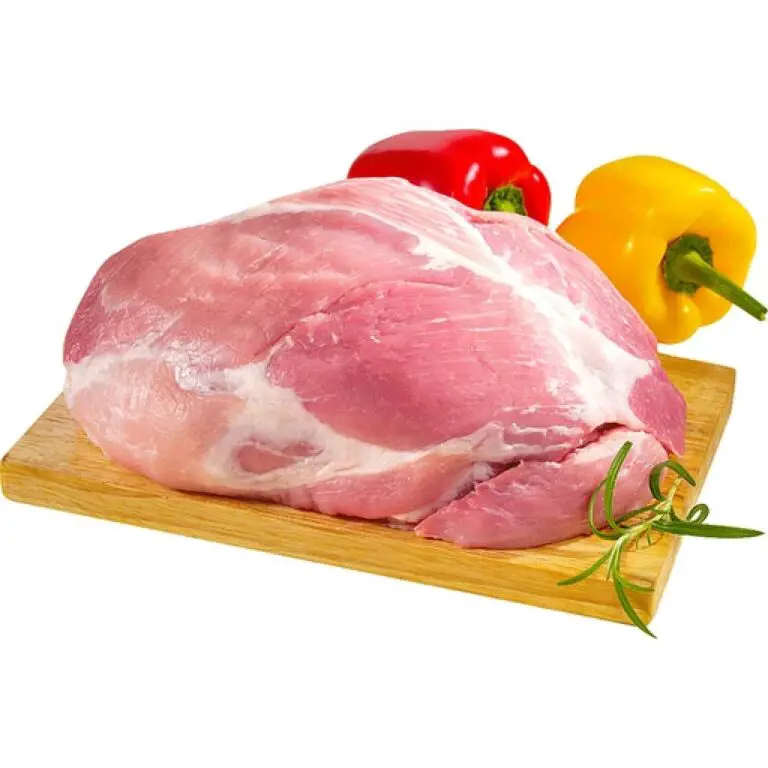Treet vs Spam: What’s The Difference Between These Canned Meat?

In the world of culinary curiosities, few things evoke intrigue quite like the realm of canned meats. It’s a topic that’s often relegated to the fringes of our culinary conversations, yet tucked away on pantry shelves for those moments when convenience meets craving. Two titans in this quirky domain are Treet and Spam, canned meats with cult-like followings and loyal aficionados.
We are going to try to unlock the mysteries of these canned mysteries in this article. Treet and Spam, each a universe unto itself, offer not just sustenance but an intriguing choice between subtlety and boldness, simplicity and versatility.
In this article, we’ll delve into the world of canned meats and explore the key differences between Treet and Spam, helping you make an informed choice for your next meal.
Join us as we venture beyond the labels to uncover the nuanced symphony of flavors, ingredients, and possibilities that set Treet and Spam apart.
A Brief Introduction to Canned Meat

Processed meats have become a staple in many households, providing convenience and affordability. But what exactly are processed meats, and how do they differ from their unprocessed counterparts? To understand this, we need to delve into the basics of processing.
Processing involves altering or treating meat in some way to improve its taste, texture, flavor, or shelf life. This can include techniques such as curing (adding salt and other preservatives), smoking, fermentation, or the addition of certain additives. The main aim is to extend the product’s shelf life while also enhancing its taste appeal.
One key distinction between processed and unprocessed meats lies in their ingredient lists. While unprocessed meats typically contain only one ingredient — the meat itself — processed alternatives often include a range of additives like nitrates/nitrites for preservation purposes and artificial flavors for enhanced taste.
Although these additives are considered safe by regulatory authorities when used within certain limits, it is important to be aware of their presence if you have specific dietary preferences or restrictions.
Moreover, texture plays a significant role in distinguishing processed from unprocessed meats. Processing can alter the structure of meat proteins, making them more cohesive and compact. This results in a smoother and firmer texture that some individuals find more appealing than the natural tenderness of unprocessed meat.
Canned meats are versatile, making them perfect for quick meals, camping trips, and survival situations. They come in various forms, with Treet and Spam being two of the most recognizable brands. Let’s take a closer look at each.
Treet: A Tasty Canned Meat Option
Treet, produced by the Hormel Foods Corporation, is a canned meat that’s often likened to bologna. It’s made from a blend of pork and chicken, seasoned with spices, and formed into a cylindrical shape. This meat is pre-cooked and ready to eat straight from the can, which makes it incredibly convenient.
Treet Nutritional Value (per 2-ounce serving):
| Nutrient | Amount |
| Calories | 130 |
| Protein | 7g |
| Fat | 11g |
| Sodium | 500mg |
Treet is rich in protein, making it a hearty option for sandwiches, snacks, or a quick addition to a salad. Its flavor is often described as mild and slightly smoky, making it a versatile ingredient for various recipes.
Spam: A Classic Canned Meat
Spam, produced by the Hormel Foods Corporation as well, is perhaps one of the most iconic canned meat products. It’s composed of a mixture of pork shoulder meat, ham, salt, water, sugar, and various other seasonings. Unlike Treet, Spam is available in various flavors, including Classic, Less Sodium, and Turkey.
Spam Nutritional Value (per 2-ounce serving, Classic variety):
| Nutrient | Amount |
| Calories | 180 |
| Protein | 7g |
| Fat | 16g |
| Sodium | 790mg |
Spam is known for its unique and savory taste, which some people describe as salty and slightly smoky. It’s a versatile ingredient that can be fried, baked, or used in a variety of dishes, from breakfast to dinner.
Read: Is There Pork Free Spam?
Key Differences Between Treet and Spam
Now that we’ve had an introduction to both Treet and Spam let’s delve into the key differences that set them apart:
Ingredients:
- Treet: Treet primarily consists of a blend of pork and chicken. It is typically milder in flavor compared to Spam, making it a good option for those who prefer a less intense taste.
- Spam: Spam, on the other hand, contains pork shoulder meat, ham, and a mixture of other ingredients. Its unique blend of flavors gives it a distinctive, more robust taste.
Nutritional Value:
- Treet: Treet is slightly lower in calories and fat compared to Spam, making it a lighter option for those who are health-conscious.
- Spam: Spam, while delicious, is known for being a bit higher in calories and fat content.
Flavor Profiles:
- Treet: Treet is often described as mild and slightly smoky. Its flavor is versatile and works well in various dishes.
- Spam: Spam is renowned for its distinct, savory, and slightly salty flavor. It’s a favorite among those who enjoy a bolder taste.
Texture:
- Treet: Treet has a tender and smooth texture, making it a great option for sandwiches or snacking.
- Spam: Spam is known for its firmer texture, which can be sliced and fried to achieve a crispy exterior while maintaining a tender inside.
Varieties:
- Treet: Treet is typically available in a single variety, with a focus on its classic flavor and texture.
- Spam: Spam offers a range of varieties, including Classic, Less Sodium, Spam Turkey, and more, providing consumers with choices to suit their dietary preferences.
Choosing Between Treet and Spam
The choice between Treet and Spam ultimately depends on your personal preferences and intended use. If you prefer a milder flavor and are conscious of calorie and fat content, Treet may be your go-to option. It’s excellent for sandwiches, salads, and a wide array of recipes.
On the other hand, if you enjoy a more robust, salty flavor and want versatility in terms of flavors and recipes, Spam is a beloved classic. It’s perfect for frying, grilling, or adding a kick to breakfast and dinner dishes.
Creative Uses for Treet and Spam
Both Treet and Spam can be used in a variety of recipes. Here are some creative ways to incorporate them into your meals:
Treet Recipes:
- Treet and Cheese Quesadillas: Create a delicious quesadilla by adding sliced Treet and cheese between tortillas, then cook until crispy.
- Treet and Veggie Stir-Fry: Stir-fry Treet with your favorite vegetables and pesto sauces for a quick and flavorful meal.
- Treet and Pineapple Skewers: Skewer Treet, pineapple, and bell peppers, then grill for a sweet and savory treat.
Spam Recipes:
- Spam Musubi: A Hawaiian favorite, this dish features Spam, rice, and nori seaweed. Spam Musabi dishes are often served as a snack or in bento boxes.
- Spam and Eggs: Fry slices of Spam alongside your morning eggs for a hearty breakfast.
- Spam Fried Rice: Dice Spam and add it to your fried rice for an extra burst of flavor.
Conclusion
Treet and Spam, though both canned meat products, have distinct characteristics that cater to different tastes and dietary preferences. Whether you prefer the mild, versatile nature of Treet or the bold, salty flavor of Spam, there’s a canned meat option to suit your needs. Experiment with both to discover which one you favor and how it can elevate your culinary creations.
So, the next time you’re at the grocery store, don’t just pass by the canned meat aisle—take a closer look, and you might just find a new kitchen favorite.
FAQs on The Difference between Treet and Spam
Is Treet healthier than SPAM?
Both Treet and SPAM are processed meat products and are not considered health foods. While Treet might have marginally lower fat content, both contain high levels of sodium and preservatives, making neither a particularly healthy option.
What are the main ingredients in Treet and SPAM?
Treet typically includes mechanically separated chicken, pork, water, salt, and various preservatives. SPAM consists primarily of pork with added ham, salt, water, potato starch, sugar, and sodium nitrite for preservation.
How do you cook Treet and SPAM differently?
Treet and SPAM can be cooked similarly, but due to their slightly different compositions, Treet may require different seasoning to enhance its flavor profile.
Can Treet and SPAM be used interchangeably in recipes?
Treet and SPAM can often be used interchangeably in recipes due to their similar textures and flavors, but the slight variation in taste might affect the final dish.
What are some alternative products to Treet and SPAM?
Some alternative products to Treet and SPAM include canned corned beef, canned luncheon meat, and various vegetarian and vegan meat substitutes.
Can Treet and SPAM be part of a balanced diet?
While Treet and SPAM can provide a quick source of protein, their high sodium content and processed nature indicate they should be consumed sparingly as part of a balanced diet rich in fresh produce and whole foods.
How long do Treet and SPAM last in terms of shelf life?
Treet and SPAM have a long shelf life and can last for several years if stored properly in a cool, dry place, away from direct sunlight and extreme temperatures.
Are there any cultural significance or regional preferences associated with Treet and SPAM consumption?
Treet and SPAM have become cultural icons in certain regions, with unique recipes and preferences associated with their consumption. For example, SPAM holds cultural significance in Hawaii and South Korea, where it is incorporated into various local dishes.






